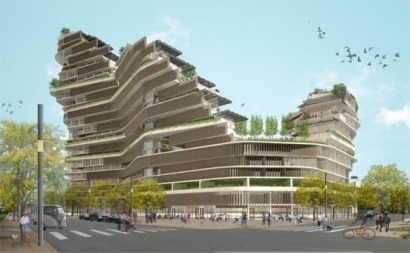
A common, but startling statistic is that commercial buildings account for 40 percent of overall U.S. energy consumption. With the implementation of the Energy Independence and Security Act of 2007, both private and federal buildings will be required to address their consumption: all federal buildings will be required to achieve net zero consumption by 2030, and all commercial buildings by 2050.
Speaking with Brian Anderson, Founding Partner of Anderson Porter Design, Dru B. Crawley, former Commercial Buildings Team Lead for the Department of Energy and current Director of Building Performance at Bentley Systems, Jeff Blankman, McCormick’s Sustainable Manufacturing Manager, and Blake Bisson, VP of Sales & Marketing at Ekotrope, I had the opportunity to look over case studies, gather insights for project managers, and assess the future of net zero building.
An eager achievement, net zero consumption may not be realistic for all buildings. Crawley explains, "Some buildings will never achieve net zero energy usage--it's just not possible to reduce their energy use enough so that renewable energy sources can make up the balance."
Crawley suggests the more realistic future of net zero is that of net zero communities. "The potential over-supply from lower energy-intensity one and two-story buildings can offset higher energy-intensity higher-rise buildings."
In the case of McCormick's food distribution center in Belcamp, Maryland, however, net zero was achievable. The 363,000 square foot facility announced its achievement earlier this spring, following the standard 12-month benchmarking period. Blankman explains how they went about achieving this, "The most important maneuver in a net zero makeover is to focus on energy efficiency first. You must reduce consumption--making a facility as efficient as possible." Which is exactly what they did at McCormick.
Beginning with a series of retrofits making the facility as efficient as possible was the first step--upgraded lighting systems and HVAC, for example. Once consumption was addressed, the facility installed a series of photovoltaic solar panels on its roof provided through a Power Purchase Agreement from Constellation Energy. One year later, the distribution center not only had an equilibrium between consumption and energy generation, but also a surplus of energy produced that was redistributed through the power grid.
In the case of new design initiatives, the energy experts suggest four things to keep in mind throughout the design and post-occupancy phases.
Integration should begin before design begins. Anderson says, “The key is participation by critical stakeholders, board members, the CEO, the banker, as well as the day-to-day management team, designers, and builders.”
Keep in mind there could be funding available. Bisson adds, “You can build an NZEB–with state incentives–at very close to the same cost as traditional construction.”
Consider potential costs and consumption possibilities beforehand. Bisson adds, “Do as much energy and cost modeling in the design process as possible so you can understand all of your alternatives–from a cost and energy standpoint. Energy modeling allows you to better figure out how to reduce cold air, absorb sunlight, and understand insulation.”
Be aware of impending challenges and regular oversight. Crawley says, “It requires a commitment from the building owner and operator to ensure the design intent is carried out. It requires that all energy use in the building be considered. It also takes periodic testing–energy simulation–to ensure performance goals remain on track.”
Do you have experience with net zero retrofit projects or design efforts? We'd like to hear from you. Please share your stories below or email Ashley directly using the link provided hereon.
[Editor’s note: Many thanks to Ashley Halligan for this article. Ashley is an analyst at Software Advice, specializing in reporting sustainability from a commercial perspective. She has more than five years’ experience in freelancing--including both travel writing and magazine editing roles. Connect with her via LinkedIn or email her here.]
For additional information:

